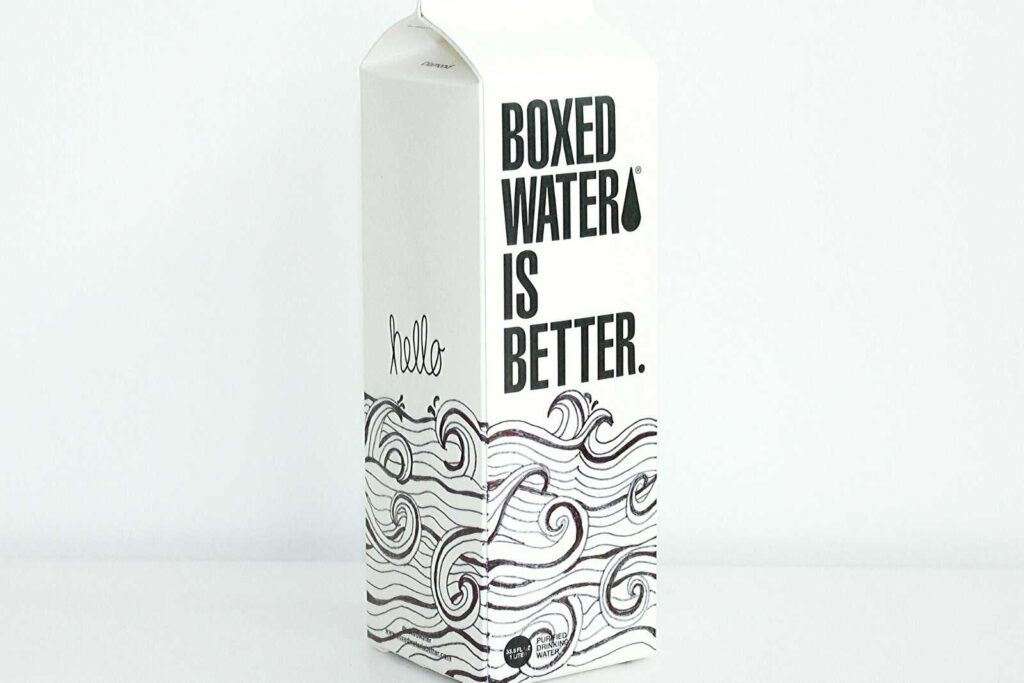Your heart is beating a bit faster. It’s your first team meeting of the new year, 2020 has arrived. Thoughts are racing through your head and across the whiteboard. A new year brings new opportunities, but also new challenges.
The packaging industry is evolving. Around the office you’ll hear artificial intelligence, polymeric nanofibers, machine learning, and more tossed around. Next, dollop on big concepts like global warming, the circular economy, and sustainability.
Suddenly, the packaging industry -long a steady ship- could be tossed into a sea of change.
Yet where challenges exist, opportunities exist. How do you turn disruption into opportunity? Don’t worry, we have assembled thoughts from the packaging industry’s best and brightest.

Prepare For the Next Wave of Disruptive Technology
The ancient Greek Philosopher Heraclitus argued that “change is the only constant.” That’s true in the packaging industry with disruptive technologies set to spur innovation. Investment guru Tim Smith says:
“A disruptive technology sweeps away the systems or habits it replaces because it has attributes that are recognizably superior.”
From: Disruptive Technology
Already, artificial intelligence is enabling faster, better, and more reliable automation. A new AI-empowered automated inspection system for packaging hints at the future. In Packaging Digest, Rick Lingle notes:
“AI enables the CapQ system to ignore water droplets and plastic fragment shedding that can skew measurement results, leading to false rejects. This software advancement and the easy-to-use operator touch screen interface make the CapQ system a pioneering quality inspection device.”
From: Artificial intelligence in packaging: CapQ vision inspection
Another technology with immense disruption potential is digital printing. Writing for LEAD Innovation Management, Angela Hengsberger argues:
“Digital printing will therefore no longer be used only for limited editions and individual products, but will also increasingly focus on the economic and speed-to-market advantages for the design of mainstream packaging.”
From: 5 market influencing trends in the packaging industry
Even less bleeding edge technologies will continue to disrupt the market. Speaking to Packaging Insights, Tetra Pak Marketing Services Director Alexandre Carvalho claims:
“Thanks to smart packaging technology, every package sold can now carry a unique digital identifier, creating the opportunity for direct one-to-one conversations with consumers, as well as helping drive efficiencies across the entire supply chain.”
Makes you wonder if we will soon talk about “genius” packaging instead of smart packaging.
From: AI in Packaging: How artificial intelligence is driving the packaging industry forward
Soren Kaplan sums up the coming tech disruptions nicely:
“Opportunities for packaging innovation will only grow as new technologies like blockchain, intelligent inks and printable circuits and sensors evolve… These technology and design innovations will fuel new “data-as-a-service” business models tied to traceability across the supply chain, consumer product usage, and overall market insight.”
From: The Packaging Industry is Massive, and It’s About to Be Disrupted
These technological disruptions are arriving as society itself experiences immense change. Sustainability is now one of the biggest challenges -and opportunities- for the packaging industry.

Sustainability Can Be a Threat or Competitive Advantage
Sustainability is no longer an option, it’s inevitable. Consumers will force the packaging industry’s hands. As Alex Jordan puts it:
“More people are readily refusing to use plastic straws and single-use bags in favor of reusable items – owning their social responsibility for seeking out greener products. Therefore, it’s essential for retailers and manufacturers to keep up with public opinion…”
From: The Future of Packaging: Where the Industry is Headed in 2020 and Beyond
So are you the greener product that gets found or the fossil-fueled dinosaur destined for extinction? Not that plastic has no future in packaging, but that future must be sustainable. Trina Matta argues:
“A plastic bottle made of recycled content is an example of sustainable sourcing of plastic. Would it really be better to shift this particular package to aluminum or glass? Most likely not.”
For Matta, creating sustainable packaging means:
“…considering questions of sourcing, efficiency, recovery, health and safety—all key pieces of the Sustainable Packaging Coalition’s definition of sustainable packaging.”
And sometimes, the best answer to those concerns is plastic.
From: Non-plastic packaging isn’t the only sustainable solution
Materials are changing with the times. Biodegradable biopolymers are more sustainable than traditional plastics and could be a hot growth industry.
“According to a new report from Smithers Pira, bioplastics for packaging currently represent a very small share of the global plastic packaging market value. But, it estimates, the bioplastic market will more than double in value from 2017 to 2022, growing at an average rate of 17% per year, to a market value of $7.2 billion.”
From: Biopolymer Materials and Technologies Flourish
Many companies are reducing the amount of packaging material used. Can you do that without cutting corners? Sophie Kieselbach and Flora D’Souza suggest:
“Keep working to reduce packaging material within the limits allowed by its purpose. And if, as with some initiatives, you start a new product line with reduced packaging and therefore reduced product shelf-life, loudly communicate it to customers and continue to help them understand the reasoning behind the changes to make sure that the net benefits outweigh the drawbacks. Life cycle thinking, as always, helps.”
From: The Top 9 Sustainable Packaging Trends in 2019
Better yet, less can be more. Global procurement powerhouse GEP argues in their company blog that:
“Focusing only on the essential parts during packaging enables designers to multiply the impact of the visual story they are trying to narrate for the brand. Simplified packaging designs also help brands to pay attention to small details and can improve overall quality.”
From: Less is More with Minimalist Packaging
If we’re to preserve this planet, the packaging industry and other industries will have to pivot to become sustainable. In an open letter from the Governor of Bank of England Mark Carney, Governor of Banque de France François Villeroy de Galhau and Chair of the Network for Greening the Financial Services Frank Elderson argued:
“If some companies and industries fail to adjust to this new world, they will fail to exist.”
So how about you? Are you going to adjust and not only exist, but excel? Or are you going to fall to the wayside?
What does this have to do with executive recruiting? EVERYTHING! Equipping our clients and candidates with everything they need to achieve success is how we do business. Anything less, and we’re just another recruiting firm. Thought leadership plays a pivotal role in the value we provide to the packaging industry.
Chase & Associates
We Have Your Back






















